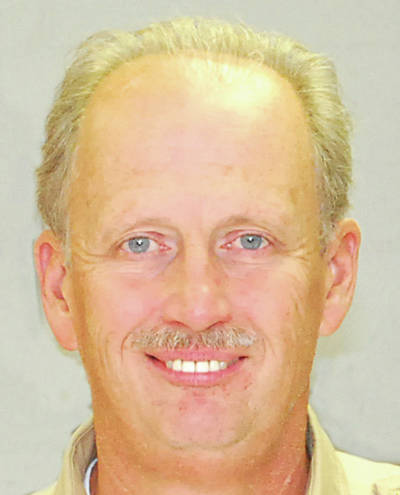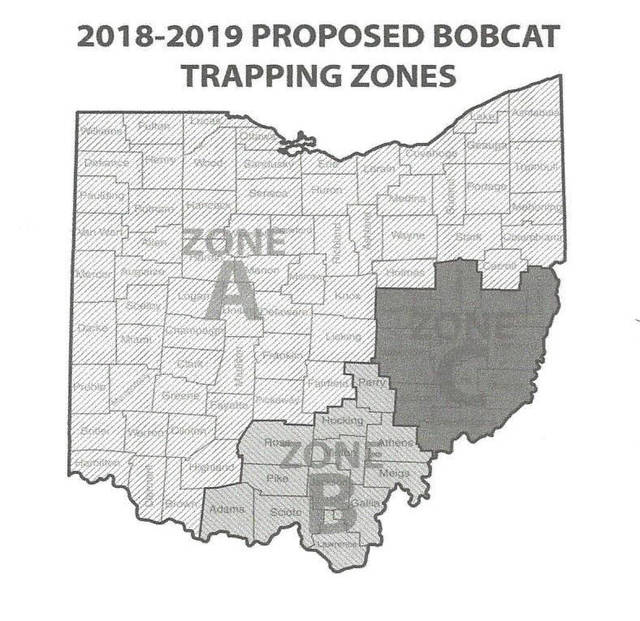

The conference room at the ODNR Division of Wildlife District One offices was packed with visitors and various ODNR Division of Wildlife staff for the February meeting of the Ohio Wildlife Council. Attendees were there to hear the latest White-tailed Deer, River Otter and Bobcat proposals. Chairman Mechling called the meeting to order. Following the roll call and confirmation of a quorum, Mechling introduced the newest council member, Jim Samuels. It was then on to the business of hearing the proposals.
Handling the presentation duties was Mike Reynolds, who is the Division of Wildlife Executive Administrator of Wildlife Management & Research. The deer proposals were first on the agenda. Reynolds recapped the 2017-2018 harvest data and also provided updates on CWD positive tests in the captive deer herd. The latest CWD positive was in the Walnut Hollow Whitetails near Sugar Creek in Guernsey County. The deer entrance and egress at that facility is still being traced.
An update on the Epizootic hemorrhagic disease (EHD) outbreak last year affecting the deer herd was provided. The chart showed the number of reported dead deer, mostly along the Ohio River counties. Kentucky had experience a major outbreak of EHD across the state with the concentration in the eastern Appalachian regions. This lead Reynolds into the proposals for the 2018 – 2019 season. Basically the dates for the season follow the long-established pattern for archery opening the last day of Sept., the youth deer season the weekend before Thanksgiving and deer gun season opening the Monday following Thanksgiving.
The deer harvest bag limits remain the same with one notable exception. Jefferson County is being reduced from a three deer bag to a two deer bag limit. Reynolds noted this is due to the number of dead deer from the EHD outbreak. They hope that this is a temporary reduction to allow the deer herd in Jefferson County to recover.
Reynolds next moved to the deer hunter survey results and concentrated on hunter satisfaction on public versus private lands. The Division had mailed 10,000 surveys to deer hunters with only about an 11% return. That small sampling did report some significant satisfaction differences between private and public land hunters. Reynolds reported this is reflected in harvest rates of about 34 percent for private land hunters and 14 percent for public land hunters based on deer check data. This lead to a proposed change on public lands to permit hunters to harvest only one antlerless deer from public hunting areas per license year. The proposal would also require that only antlered deer be harvested on public land after Dec. 2. The intent is to allow for some herd growth on public land.
Next on the Division’s list of proposals were minor changes to the river otter trapping. Reynolds explained there are three zones established for river otter management. There have been no changes in the program since it was established. Zone A, which is 45 counties, was previously closed to trapping but is proposed to move to one river otter bag limit. Additionally, Zone C, which has a 3 river otter bag limit, will be reduced with several counties moving to Zone B with a 2 river otter bag limit.
Reynolds’ final presentation was on the topic of bobcat trapping. This has been a much anticipated proposal. The Ohio State Trappers Association recently adopted a resolution supporting a trapping season for bobcat. The proposed limited bobcat season will only be open in selected counties with the state divided into three zones. The largest is Zone A which is closed to bobcat trapping. Greene County is in Zone A. Zones B and C will be open to limited trapping with a strict quota system. Zone B, in southeastern Ohio, will have a quota of 20 bobcats to be harvested. Zone C, which is eastern Ohio counties, will have a quota of 40 bobcats.
Trappers would be required to purchase an additional $5 permit and only be allowed to harvest one bobcat per license year. Trappers will be required to report the harvest of any bobcat by 11:30 p.m. on the day of harvest. Trapping in each zone will close when the quota is reached. The trapping season will begin Nov. 10, 2018 and end on Jan. 31, 2019 or when the quota for each zone is reached.
The trapping season is proposed in conjunction with a research study conducted by the Division of Wildlife and Ohio University. The research study is to determine and improve bobcat habitat, develop harvest recommendations and implement a conservation plan, establish a protocol for nuisance bobcats and the rehabilitation of any kittens and, finally, to increase public awareness of bobcats in Ohio.
Where the bobcats are successfully harvested will provide additional data on age, habitat and diet. Currently forty states have bobcat hunting and/or trapping seasons including Michigan, Kentucky, Pennsylvania and West Virginia. Indiana is currently considering a limited bobcat season. The Division of Wildlife received reports of almost 500 verified sightings in 2017. There have been a few reported but no verified sightings in Greene County. Anyone with a sighting should contact the Division of Wildlife District Five office in Xenia.
Additional information on bobcat can be found at www.wildlife.ohiodnr.gov/species-and-habitats/species-guide-index/mammals/bobcat
The proposed rules changes will be available for public comment at the annual Division of Wildlife open houses 12-3 p.m. Saturday, March 3. The local open house will be held at the Greene County Fish and Game Association, 1538 Union Road. A complete list of proposed rules changes can be found at www.wildohio.gov.



